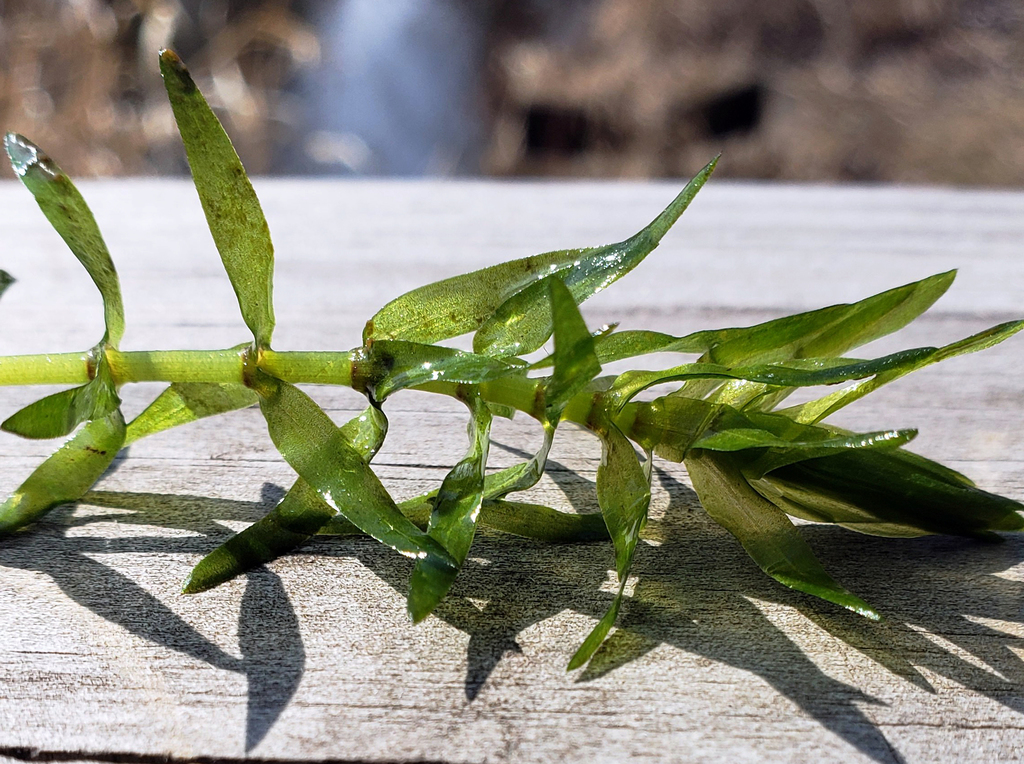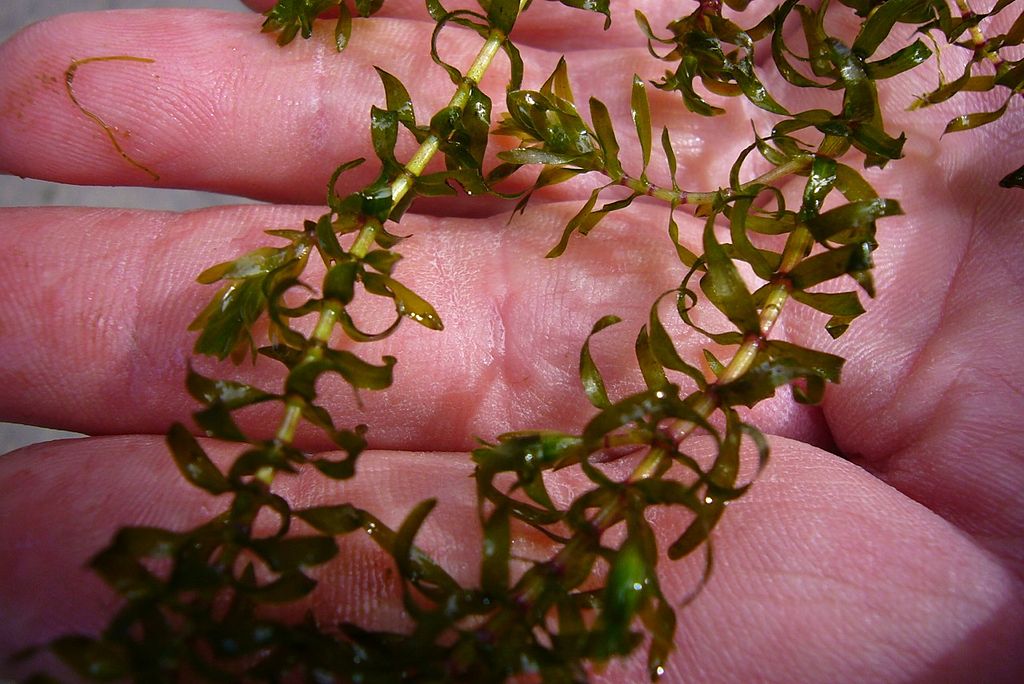western waterweed (Elodea nuttalli)
Invasive?
This perennial submerged plant forms dense populations that often colonize entire water bodies, restricting water movement, blocking light, creating anoxic conditions, and accelerating sediment deposition. Because of its rapid nutrient uptake and very high growth rate, the species displaces native aquatic plants.
The species' original range in North America extends from Quebec through Montana to Washington, and south to North Carolina and California. Spread is by vegetative propagation: shoot parts are transported widely by flowing water, marine traffic, water sports equipment (including fishing), and waterfowl. A new waterweed population grows from the shoot fragments.
Where?
Elodea nuttallii is an underwater plant that grows in various types of freshwater habitats, from stagnant to slow-flowing waters. It is very tolerant of water pollution and prefers warm, eutrophic and calcareous waters. It is often found in species-poor aquatic plant communities. It is more nutrient tolerant than its sister species Elodea canadiensis and can even survive in wastewater with concentrations up to 27.2 mg NH4+-N/l. Thus, it benefits more from water pollution than E. canadensis. Elodea nuttallii can form dominant stands in nutrient-rich, stagnant or slow-flowing waters. In hypertrophic waters, dominance stands of narrowleaf waterweed can occur especially after nutrient levels are reduced.
Appearance?
In addition to the Canadian pondweed (E. canadensis) and the Western waterweed, the Argentine waterweed (E. callitrichoides; with flat, longer leaves) is also found in our area, but all species are quite difficult to distinguish. Waterweed species are perennial submerged aquatic plants. Their densely leafy shoots creep or grow erect. They are about 1 mm thick and up to 300 cm long. The light green narrow leaves of this species are 3-cornered to linear, long-pointed, up to 10 mm long and 0.4 - 1.5 (-2.4) mm wide. In the lower stem area they are alternately arranged, in the upper area they are in mostly 3-fold whorls. In contrast to the Canadian pondweed (E. canadensis), the leaves of the Western waterweed are narrower, long-pointed, recurved and more or less strongly spirally twisted.
Distribution in Luxembourg: https://neobiota.lu/elodea-nuttallii/

Linear, long pointed light green leaves of narrow-leaved waterweed.
"Elodea nuttallii" by aarongunnar is licensed under CC BY 4.0.

A slight spiral twist can be seen on some leaves, this distinguishes E. nutallii from E.canadensis.
"File:Elodea nuttallii* (8405291256).jpg" by Radio Tonreg from Vienna, Austria is licensed under CC BY 2.0.

Dense dominant stands of the
Narrow-leaved waterweed.
"Elodea nuttallii" by ahospers is licensed under CC BY 4.0
This website uses no external trackers, no analytics, just session cookies and values your online privacy.
